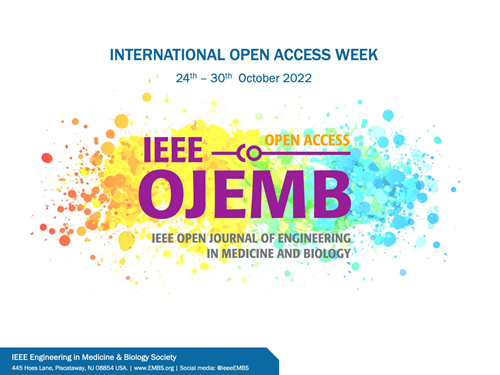Developing a Vital Signal Detection Electrode for Fabric Substrate Using a High-Performance Conductive Carbon-Based Ink
IF 2.9
Q3 ENGINEERING, BIOMEDICAL
IEEE Open Journal of Engineering in Medicine and Biology
Pub Date : 2024-07-19
DOI:10.1109/OJEMB.2024.3431030
引用次数: 0
Abstract
Merging electrophysiology signal monitoring technology with wearable devices offers interesting future health care options. This study presented carbon-based screen-printing inks produced by mixing a graphite composite with a polymer emulsion to bind with flexible fabric substrates and tested with 10,000 bending cycles. The prepared carbon-based ink performed well for electrical conduction and vital signal response. Adding calcium carbonate resulted in a microstructure of graphite that decreased the electrical sheet resistance and resistance to 11.61 Ω/◻ and 0.127 Ω. The signal-to-noise ratio of the electrocardiogram (ECG) was 31.02 dB with built-in front-end powering noise filtration. Noninvasive blood pressure (NIBP) was achieved by bio-impedance measurement and showed outstanding systolic and diastolic pressure values with a correlation coefficient of 0.799, and exhibited a similar interval time to define the same precise heart rate. The ECG data from the prepared electrode were applied to the machine learning models. The Random Forest (RF) model exhibited the optimized prediction value, with an F1 score of 99.9%. Equipment made from carbon screen-printing inks showed potential for health care monitoring with no excessive pressure, dry processing, and repeatability as a flexible wearable bio-electronic device.使用高性能导电碳基墨水开发织物基底的生命信号检测电极
将电生理信号监测技术与可穿戴设备相结合,为未来的医疗保健提供了有趣的选择。该研究展示了碳基丝网印刷油墨,该油墨是通过混合石墨复合材料和聚合物乳液与柔性织物基材结合而制成的,并进行了10,000次弯曲循环测试。所制备的碳基油墨具有良好的导电性能和生命信号响应性能。碳酸钙的加入使得石墨的微观结构降低,电阻分别为11.61 Ω/钻和0.127 Ω。内置前端电源噪声滤波,心电图信噪比为31.02 dB。通过生物阻抗测量获得无创血压(NIBP),并显示出出色的收缩压和舒张压值,相关系数为0.799,并且具有相似的间隔时间来定义相同的精确心率。将所制备电极的心电数据应用于机器学习模型。随机森林(Random Forest, RF)模型显示出最优的预测结果,F1得分为99.9%。由碳丝网印刷油墨制成的设备作为一种灵活的可穿戴生物电子设备,具有无过度压力、干法加工和可重复性的医疗保健监测潜力。
本文章由计算机程序翻译,如有差异,请以英文原文为准。
求助全文
约1分钟内获得全文
求助全文
来源期刊

IEEE Open Journal of Engineering in Medicine and Biology
ENGINEERING, BIOMEDICAL-
CiteScore
9.50
自引率
3.40%
发文量
20
审稿时长
10 weeks
期刊介绍:
The IEEE Open Journal of Engineering in Medicine and Biology (IEEE OJEMB) is dedicated to serving the community of innovators in medicine, technology, and the sciences, with the core goal of advancing the highest-quality interdisciplinary research between these disciplines. The journal firmly believes that the future of medicine depends on close collaboration between biology and technology, and that fostering interaction between these fields is an important way to advance key discoveries that can improve clinical care.IEEE OJEMB is a gold open access journal in which the authors retain the copyright to their papers and readers have free access to the full text and PDFs on the IEEE Xplore® Digital Library. However, authors are required to pay an article processing fee at the time their paper is accepted for publication, using to cover the cost of publication.
 求助内容:
求助内容: 应助结果提醒方式:
应助结果提醒方式:


